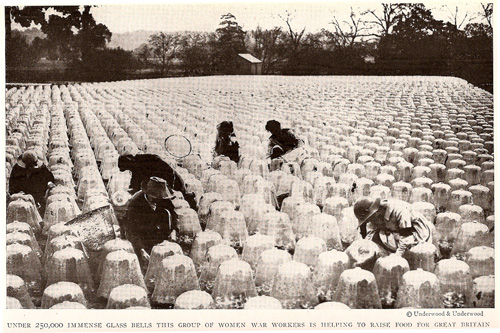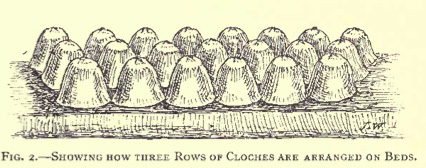The year 2008 closes with two enormous scientific and technological challenges unresolved: How to create renewable and benign sources of energy and how to lessen the damage we're doing to the global climate system.
Those twin issues are the "greatest challenge facing modern science," according to Nobel laureate Steven Chu, the gifted physicist who has been nominated to head the Department of Energy. He will be at the center of the effort to deal with these vexing problems, and his nomination signals a new day in that effort.
Clearly, those two issues dominated the world of science during 2008, a year that also saw much progress in fields as diverse as genetic engineering, the imaging of new planets outside our solar system and the maturing of social media that has altered everything from how we meet people to financing a costly and victorious campaign for the presidency of the United States. It's difficult to pick a single scientific achievement that stands out above all others because science, as a whole, doesn't work that way.
Science is and always will be a work in progress. Discoveries today are built upon past discoveries as progress is achieved, inch by inch. But rarely has there been a year when two inseparable issues dominated so much of our lives.
Energy and climate moved science from the lab to our living rooms and they were the "hot button" scientific issues of 2008.
The "breakthrough" in this case is not just hardware; it's a growing understanding of the urgency in solving these critical problems. Here's our list of the top 10.
Energy and Climate Change
The year the earth stood still. Polluted air, a lopsided dependence on shaky sources of foreign oil and congested highways couldn't convince Americans that it was time to get serious about new sources of energy. But more than four bucks per gallon at the gas pump did the trick.
Biofuels, hybrids and photovoltaic cells slipped into our conversations like invaders from another planet. Progress was reported from all areas of energy production but not all roads led us closer to energy independence. Corn isn't going to replace gasoline. That may be the most important energy "discovery" in 2008. Corn displaces agricultural land normally used for food production and, according to one study, it takes about 28 gallons of water to produce enough biofuel from corn to push a car just one mile. Substitute water wars for gas wars.
That disappointment grew out of research that was dictated by funding. Washington thought corn was a good idea and that's where a lot of research funds went. It should be the other way around. Let discoveries chart the course; let the funding follow. Stay fluid.
Throughout the year, discoveries flowed in from hundreds of labs: wearable electronic circuits that can use body movements to recharge batteries; solar panels so flexible they can be "painted" on a roof; photovoltaic cells that are twice as effective at converting sunlight to electricity; and a new generation of fuel-efficient vehicles.
The Sun Is Rising
Construction is under way on new wind farms, with huge turbines generating electricity from the passing breeze, and vast acreage is being converted to solar collectors. Scientists at several institutions made progress in creating a way to store solar energy by using solar power to split water into oxygen and hydrogen and using the hydrogen as fuel.
It took a long time but the sun is finally rising as our most promising source of clean, sustainable energy.
Cells, a New Beginning
Scientists achieved several goals in what was once thought impossible -- reprogramming adult cells to act as stem cells, morphing into new cells. That progress, labeled by Science magazine as the "breakthrough of the year," could potentially solve two huge problems.
A Really Big Machine
The grandest new toy to go online in 2008 is the Large Hadron Collider, a 17-mile-long, ring-shaped particle accelerator on the French-Swiss border meant to recreate the conditions during the first instant after the Big Bang. The machine, built by 26 nations for $8 billion, gives scientists their best chance yet to find the postulated Higgs boson or so-called "God particle," which is believed to be the particle that gave mass to all other particles. But every new accelerator, erroneously referred to as atom smashers, seems to come with its own agenda. Who's to say, at this point, what the Hadron will tell us about the beginning of the universe?
Unfortunately, the collider had to be shut down after operating a few days in September because it sprang a helium leak. It is scheduled to be operational again in June. But, fortunately, it didn't do what some folks feared it might -- create black holes that could destroy the earth. Physicists have tried to dehorn that myth, noting that particle collisions happen naturally all the time and the planet is still here.
Social Media
Here's a newcomer to the annual year's top 10 list, and it slipped in so quietly that a lot of lists missed it entirely.
Some of its components have been around for awhile -- Facebook, YouTube, Twitter, etc. -- but during 2008 they took center stage, changing the way many of us interact and providing vital information during disasters ranging from fires to warfare to terrorism.
Social Networking Here to Stay
This year, it helped President-elect Barack Obama make history, raising enough money from millions of citizens to finance a successful campaign for the presidency. Obama used the new kid on the block, Twitter, to keep his followers informed and, of course, to lift a little change out of their pockets.
Social networking is here to stay and several sites remain the hottest on the Internet. Earlier this month. Google reported that four of the 10 "fastest-rising" search terms in 2008 were for social-networking sites, including three in Europe -- Facebook login (3), tuenti (4), nasza klasa (7) and wer kennt wen (8).
Dead Mice Resurrected
Geneticists in Japan cloned dead mice that had been frozen for 16 years and produced 13 healthy, live mice. The breakthrough suggests that it may be possible to bring back extinct animals, like the wooly mammoth, that have been dead and frozen for some time, a feat that was once thought impossible. This process relied on transferring the nuclei from dead cells drawn from the brains and blood of the dead mice and injecting just that part into unfertilized mouse eggs, creating embryos.
But it will be difficult to resurrect animals that have been dead for a long time, the scientists said in announcing their discovery, because cells from dead animals decay quickly, even if frozen.
It's not quite Jurassic Park but maybe it's a step in that direction.
Spacewalk, Made in China
Low earth orbit isn't exactly crowded but it grew a little tighter this year when a Chinese astronaut took a 15-minute spacewalk outside the Shenzhou VII capsule 213 miles above the Earth. It was China's third manned venture into space, and the country plans to launch its own space station in a little more than a decade.
China is now recruiting more astronauts -- or "taikonauts" in Chinese lingo -- for future missions.
Planets, Anyone?
Discovery of new planets outside our solar system came in rapid fire during 2008 and, for the first time, astronomers were able to image several planets, not just infer their existence from various clues. New telescopes, and new techniques, revealed huge planets orbiting at great distances from their stars, so none of them are likely to harbor life as we know it. But it was a significant milestone in the search for whatever, or whoever, is out there.
Previously, astronomers relied on faint movements of the stars from the gravitation of an orbiting planet, called the wobble effect, as one means of finding planets. They could also measure the slight dimming of a star when a planet passed between the star and the earth. But neither of these techniques allowed them to actually see the planets, which were too dim to be seen near a brilliant star. Now, they can begin analyzing their data to learn more about the planets' atmosphere and, thus, more about whether they could sustain life.
None of the exoplanets imaged so far are likely candidates but maybe someday ...
Can You See Me Now?
Invisibility Cloaks on the Horizon
Have you ever wished you could be invisible, a fly on the wall that no one could see? Well, stay tuned.
Some clever researchers at the University of California, Berkeley, say they are close to inventing a "cloak of invisibility" that can deflect anything that travels as a wave, like light and sound. You can't see it, you can't hear it, how you going to know it's there?
This magic resulted from the creation of new substances, called metamaterials. The surface has incredibly tiny structures that are small enough to interfere with individual waves. If you were cloaked in such material, light waves would bend around you and meet up on the other side. You would have disappeared without a clue.
The technology could have many practical applications, some of which are obvious. Think stealth bomber.
Life on Mars?
Not yet, at least not that we know of. But NASA's intrepid spacecraft Phoenix, cobbled together partly with some leftover parts at a paltry cost of $420 million, showed once and for all that there is ice beneath Mars' north pole. That increases the possibility that there is, or at least was, life somewhere on the Red Planet, because water is essential for life as we know it.
Phoenix wasn't exactly looking for life but months of poking and digging and analyzing produced some reason for hope. The small craft found salts and clays, which require water to form, and it dug up ice crystals from the red soil.
Because of the planet's varying distances from the sun, and its tilted axis, the polar regions do warm up about every million years or so, making those areas more suitable for life. Even a microbe would be a welcome sight.
Your Genome, Cheap
DNA guru James Watson had his entire genome sequenced. It took a couple of months and cost only about $1 million. Now, it seems, everybody wants to get into the act.
A number of companies began offering genome sequencing, and the cost dropped to about $200,000. Still others opened shop, offering an abbreviated profile that would search for a wide range of potential illnesses for a few hundred dollars. But health authorities across the country became alarmed because of the potential for mistakes and difficulty in interpreting what the findings actually mean, and regulatory agencies leaped into action with new and proposed rules.
So at the moment it's not clear how available any of these services are likely to be but it's probably only a matter of time. At least we would know more about what to dread, even if we can't cure it yet.






















